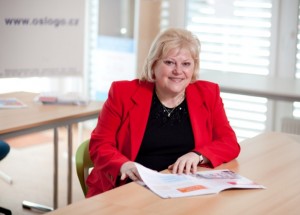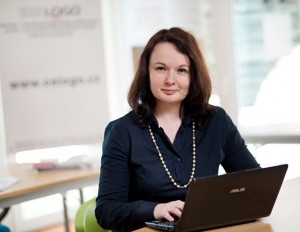About the authors:
Since 1990, LOGO has been a private clinic in the city of Brno, Czech Republic focused mainly on communication disorders. From 2004, the clinic has been a holder of quality certification ISO 9001:2000 for diagnostics and treatment of communication disorders and research and development in the area of clinical speech therapy.
Model of patients´ care is based on complex approaches, which requires tight cooperation of many specialists – clinical speech therapist, foniatric doctor, neurologist, psychologist, psychiatrist, rehabilitation doctor, physiotherapist, and others who cooperate on diagnosis and procedure of subsequent therapy. In the area of clinical speech therapy the clinic offers diagnostic and re-educational hospitalisation. This complex treatment is suitable for accompanied children, but also for adult patients.
Complex care at the Private clinic LOGO includes:
- Speech therapy
- Foniatrics (study of voice disorders)
- Otorhinolaryngology (study of ear, nose and throat diseases)
- Neurology
- Internal doctor
- Psychology
- Psychiatry
- Rehabilitation doctor
- Physiotherapy
- Art therapy (drama therapy, music therapy, art therapy)
- Ergo therapy (occupational therapy)
A characteristic feature of the care provided is the mixture of individual and group therapies. Children of pre-school age can attend social welfare institution which works as a special kindergarten for clients who need intensive care. Currently the clinic registers over 6,000 patients, and carries out around 60,000 examinations.
The clinic is equipped with most modern technology in the area of speech therapy, foniatrics and rehabilitation. It focuses on the treatment of stuttering.
Forms of speech therapy care for people who stutter include:
- Individual therapy
- Group therapy
- Diagnostic stays
- Re-educational stays
In the complex program of stuttering we include breathing training, phonetic exercises, phoniatric treatment, special speech therapy, psychotherapy, rehabilitation treatment, swimming exercises, massages, oxygen therapy and relaxation therapy.
This program is based on the health condition of the patient and lasts from one to four weeks of intensive re-education in our inpatient department, which is always preceded by one week of diagnostic stay. After this therapy stay, patients continue the therapy externally – once a week.
The first year of complex treatment is worked out by a team of experts – special phoniatrist, neurologist, experienced speech therapist and psychologist or rehabilitation specialist and physiotherapist.
During the following year, patients can attend those re-education methods which helped them a lot and which they prefer. However the improvement of the patient´s speech fluency occurred in the first weeks of re-education.
The patients are invited to regular check-ups usually once a week to monitor their speech fluency. In our patient material, including during the last three years 2,182 persons – 85 percent males and 15 percent females, we have registered severe grade of stuttering in 30 percent, medium grade in 45 percent and moderate grade in 25 percent.
We have seen an improvement in 90 percent during the first year of the complex re-education. There was no remarkable improvement in 10 percent of our patients.
For the documentation of the state of speech, we use audio and video taping and the
spirometry check-up from the very beginning of the treatment.
Our patients with different diagnosis share a summer camp every year for a week in winter, one week in summer. During the summer camp they have intensive therapy in speech therapy, psychotherapy and intensive rehabilitation and exercises.
Thanks to the positive approach of all the specialists who participate in the treatment of our patients and thanks to the participation of the patients themselves, the treatment lead to positive outcomes for most patients and sustained fluency through intensive interventions.
![]()



This is an exciting model for a comprehensive approach to the treatment of stuttering in the Czech Republic. Are services only available to people who speak Czech? You do not mention anything about funding or cost of services. How are these services funded for clients?
Judy Kuster
The services are also available in English. Some of the speech therapists, doctors and rehabilitation staff are able to provide therapies in English. The services are from more than 90% covered from health insurance companies. Clients pay only for accomodation and food during teh therapeutical stay at the clinic.
The list of techniques that LOGO offers in the program for stuttering is quite an exclusive list ranging from phonetic exercises to swimming and massages. I’m curious if any of these techniques seem to commonly work the best for patients or if it varies between what is helpful to an individual.
Thank you, El
The services at the clinic are complex. Our specialised professionals combine the exercices and technigues for each client according their special needs. So they individualised the treatment for each client as much as possible.
Very informational and interesting article. As a first year graduate student, I have only experienced observing individual and group sessions that include PWS. At your clinic, have you found better results from individual or group therapy in PWS? Following the intensive re-education program patients continue therapy, is this usually individual or group therapy?
Your complex re-education improvement percent was great! It would be interesting to know the age range of these individuals. Does your program benefit children more than adults or vice versa?
Thank you. We combine individual and group therapies. Both have its positive parts. Many clients have both therapies. We respect also the wish of the client and we are trying to be as helpful as possible. The age range of individuals was from children to adults. There were more children in our program.
I asked the following questions about your clinic during last year’s ISAD conference but received no satisfactory answer. At your clinic, do SLPs collaborate in organized fashion with the professionals across allied health and educational disciplines for the treatment, not just diagnosis, but the treatment of stuttering? If so, are they reading off the same page in following the speech therapy model? In other words, are they using the specific tools from their disciplines to help stuttering patients overcome specific hurdles and problems in speech therapy in collaboration with SLPs? Or is it more of an informal catch-as-catch-can big tent where everyone just does their own thing? The problem is that while qualified SLPs know much about stuttering, they lack the therapeutic tools. While experts from other fields possess the therapeutic tools, they know very little about stuttering. In a coordinated multidisciplinary team approach, the SLP would recruit these outside experts with the needed therapeutic tools to help individual stuttering clients overcome specific hurdles and problems in speech therapy. But the outside experts would absolutely need to accept the speech therapy model so there could be ongoing active collaboration as needed. Otherwise, these other people would be trying to reinvent the wheel in stuttering therapy which makes no sense, but that is exactly what occurs now when SLPs simply refer tough cases AWAY. Is the coordinated multidisciplinary team approach for the treatment of stuttering which I describe used at your clinic? — Ed Feuer edfeuer@mts.net
At our clinic LOGO we have the coordinated multidisciplinary team. All experts cooperate in diagnostic and therapy. They have the same scientific background in their approach. It is why is the therapy working and has results. It is done also according to special needs of the clients.
What is the overall stuttering-therapy model used by your team? Are the therapeutic tools of the non-SLPs team members provided in modular form as required in a systems approach? is there a team leader who acts as facilitator? Are members of the team in close liaison concerning the progress of the client an ongoing treatment process, rather than a two- or three-week “quickie fix”?
— Ed Feuer edfeuer@mts.net
Dr. K. and Eva,
It has been my distinct pleasure to collaborate with LOGO since 2004 and to see your diverse service providers in action while delivering both traditional and non-traditional forms of treatment. In our co-authored paper for ISAD 2012, I shared my very positive impressions of your operation and that of the five graduate students I had with me during my visit in 2010. You have something remarkably special in Brno and I am so glad that you are beginning to share it with the international community. You epitomize collaboration and I celebrate you. I look forward to hosting your visit to Western Carolina University in just a few short weeks. Warm regards to you and keep up the excellent work.
Kindly,
David Shapiro
Dear David, thank you very much for your very nice words. We appreciate our cooperation very much. We are so much looking forward visiting you in Western Carolina University and learning from you, giving information to your students. Collaboration among specialists and countries is so important. Sharing knowledge and changing information. Thank you and see you soon !! Warmly, Eva and Ilona
Dear Dr. K and Eva,
I really enjoyed your paper. I like the multi-disciplinary approach your clinic provides clients. I read that you employ modern technology in the areas of stuttering. Is all therapy provided on-site? Do you serve any children/adults who stutter via distance technology?
Thank you,
Eileen
Idaho State University Graduate Student